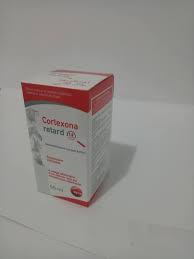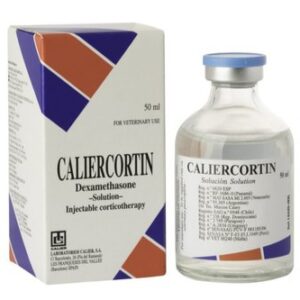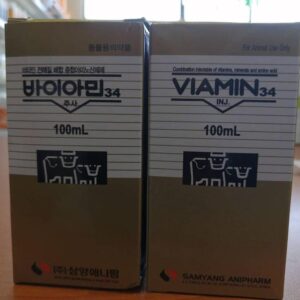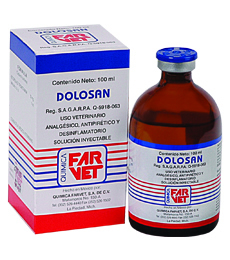cortexona retard is prescribed to cattle, sports and work horses, pigs, dogs and cats as an anti-inflammatory, anti-allergic, anti-edematous and gluconeogenetic drug in the treatment of post-traumatic edema, cortexona arthritis, tenosynovitis, as well as acute mastitis and cattle syndrome, cattle syndrome, mastitis-agalactia of sows, allergic dermatitis and eczema in dogs and cats. cortexona Trade name of the medicinal product for cortexona:
Cortexona retard.
Dexamethasone.Dosage form:
Suspension for injection.Composition for Cortexon:
Cortexon retard in 1 ml contains:
As an active ingredient – dexamethasone (isonicotinate) – 1.25 mg;
Excipients:
– sodium chloride;
– polysorbate 80;
– benzyl alcohol
– water for injection.In appearance, the drug is an aqueous suspension of white color. With prolonged storage, it may delaminate, which disappears with shaking.Pharmacological properties for cortexona:
Pharmacotherapeutic group: hormonal drug. Dexamethasone, which is part of the drug, is a glucocorticosteroid, methylated derivative of fluoroprednisolone. It has a pronounced and prolonged anti-inflammatory, anti-allergic, desensitizing effect, and has immunosuppressive activity.
The mechanism of action of the hormone is to block the release of inflammatory mediators by eosinophils, including prostaglandins, which potentiate the inflammatory process;
in stimulating the biosynthesis of lipocartins with decongestant activity;
in reducing the permeability of capillaries and the number of mast cells that produce hyaluronic acid.The immunosuppressive effect is due to inhibition of the release of cytokines (interleukin – 1,2, gamma interferon) from lymphocytes and macrophages, inhibition of proliferation of lymphoid tissue and cellular immunity, and a violation of the kinetics of T-lymphocytes.
The main effect of dexamethasone on metabolism is associated with protein catabolism, increased gluconeogenesis in the liver, and decreased glucose utilization by peripheral tissues.
After intramuscular administration, the maximum plasma concentration of dexamethasone is detected after 60 minutes.cortexona
The therapeutic concentration in the blood serum lasts 30-96 hours, depending on the type of animal. The bioavailability of dexamethasone with intramuscular injection of the drug is 100%. Biotransformation of dexamethasone occurs in the liver and partially in the fibroblasts involved in the metabolism. As a result, 17-hydroxycorticoids are formed that do not have biological activity, and 17-ketosteroids with androgenic effect are formed as well. Metabolites bind to glucuronic acid and sulfates in the liver and kidney x, where they turn into water-soluble sulfuric esters and ricoronids, which are rapidly excreted in urine (75%) and bile (25%).
cortexona retard in terms of exposure to the body belongs to moderately hazardous substances (hazard class 3 according to GOST 12.1.007).Application Procedure:
cortexona retard is prescribed to cattle, sports and workhorses, pigs, dogs and cats as an anti-inflammatory, anti-allergic, anti-edematous and rlucon-essential drug in the treatment of post-traumatic edema, arthritis, tenosynovitis, and acute thymus and cattle mastitis , sows metritis-mastitis-aalactia syndrome, allergic dermatitis and eczema in dogs and cats.The drug is administered to animals once intramuscularly in the following doses:
– to cattle, horses, pigs – 1 ml. by 62.5 kg. animal mass;
– calves, foals, piglets – 1 ml. 40 kg. animal mass;
– dogs – 0.5 ml. 8 kg. animal mass;
– for cats – 0.25 ml. 2 kg. mass of the animal.
If necessary, the injection is repeated in the same dose after 10-14 days.
Before use, the drug bottle should be thoroughly shaken.
There were no specific features of the action during the first use of the drug or during its withdrawal.
cortexona retard should not be used in pregnant animals in the last third of pregnancy. The use of corticosteroids in lactating cows can cause a short-term decrease in milk productivity.
The use of the drug to stimulate labor can cause a decrease in the viability of the fetus, and also increase the frequency of retention of the placenta.
A drug is usually used once. Contraindications for cortexona:
A contraindication to the use of the drug is the individual hypersensitivity of the animal to one of the components of the drug (including a history).
Not recommended for use in animals with diabetes; with hepatic, renal, or heart failure; peptic ulcer of the stomach and duodenum; with bone fractures and osteoporosis; with degenerative diseases of the eyes and / or corneal ulcer; with hyperadrenocorticalism.
Animals suffering from bacterial, fungal and / or viral diseases, cortexona retard should be used using etiotropic and pathogenetic therapy. If it is necessary to use the drug in such cases, treatment of animals should be carried out under the strict supervision of a veterinarian.
Cortexon retard is forbidden to use for horses whose meat and milk are used as human food.Side effects and overdose cortexona:
In case of overdose, horses may experience drowsiness.Side effects and complications when using cortexona retard in accordance with this instruction, as a rule, are not observed.
With prolonged use, the manifestation of Cushing’s syndrome is possible, which causes redistribution of fat in the body, muscle weakness, weight loss and osteoporosis.
Polyuria, polydipsia and polyphagy are possible. In the event of allergic reactions, the use of the drug is stopped and, if necessary, desensitizing therapy is prescribed.cortexona retard is not recommended for use with other glucocorticosteroids, anti-diabetes drugs, barbiturates, diuretics that remove potassium, indomethacin, salicylates, antihistamines, calcium salts, tetracyclines, macrolides, vancomycin, kanamycin, novobiocin and ephedrine.
cortexona retard should not be used in conjunction with vaccines due to the immunosuppressive action of corticosteroids.cortexonaSpecial instructions for cortexona :
Slaughter of animals for meat is allowed no earlier than 60 days after the last use of Cortexon retard. Meat of animals forcibly killed before the expiration of the specified period can be used as feed for fur animals. Milk of dairy animals is allowed to be used for food purposes not earlier than 48 hours after the last injection of the drug. Milk obtained earlier than the deadline can be used after boiling in animal feed.
Personal preventive measures for cortexona
When applying cortexona retard, it is necessary to follow the general rules of personal hygiene and safety precautions provided for when working with medicines.
In case of accidental contact of the drug with the skin or if: with the ocular membranes of the eyes, rinse them with plenty of running water. People with hypersensitivity to the drug should avoid direct contact with Cortexon retard. It is forbidden to use empty bottles from under a medicinal product for domestic purposes, they must be disposed of with household waste.
In case of allergic reactions or in case of accidental ingestion of the drug into the human body, you should immediately contact a medical institution (you should have the instructions for use of the drug or a label with you).
Shelf life for cortexona :
Subject to storage conditions in unopened packaging – 3 years from the date of production, after the first opening of the bottle – 28 days.
It is forbidden to use the drug after the expiration date for cortexona.
Packing: Release for cortexona
packaged in glass bottles of dark yellow in 20, 50 and 100 ml, packaged in individual cardboard boxes along with instructions for use.
Storage conditions for cortexona :
Store in the manufacturer’s sealed packaging, in a dry place protected from direct sunlight, separately from food and feed, at a temperature of 4 ° C to 25 ° C.
cortexona Retard should be stored out of the reach of children.
Unused drug is disposed of in accordance with legal requirements.
It is released without a prescription by a veterinarian.https://kihorsemed.com/





Reviews
There are no reviews yet.